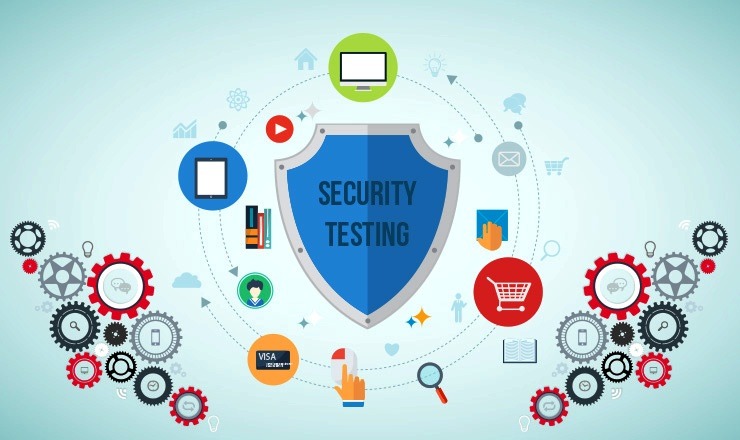Security testing plays a crucial role in the overall software testing process, as it serves to protect your software application from potential security threats and vulnerabilities. Neglecting security testing can result in significant damage not only to your application but also to your brand or organization as a whole. This article will guide you through the fundamentals of security testing, highlighting its importance, various types of security testing, and more. Let’s begin with understanding the definition of security testing.
How can we define Security Testing?
Security testing refers to a specific type of testing aimed at uncovering potential risks, threats, and vulnerabilities within a software application. Its purpose is to protect the application from malicious attacks by intruders. By conducting security testing, all possible loopholes in the application that may render it susceptible to cyber-attacks are identified. This ensures the safeguarding of data and resources against unauthorized access. Upon detecting these security risks, programmers can then address and rectify the identified vulnerabilities, thus maintaining the overall security integrity of the system.
Significance of Security Testing
Protecting customer data is of utmost importance for any business or organization. With the alarming increase in cyber attacks, particularly in the aftermath of the Covid-19 pandemic, the significance of security testing has reached unprecedented levels. Its primary objective is to ensure that unauthorized third parties are unable to exploit or easily breach your system. Ultimately, security testing provides defense against data breaches or external attacks. Neglecting security testing can lead to severe consequences such as loss of information, revenue, and damage to brand reputation.
Types of Security Testing
Security testing encompasses various methodologies, including:
- Vulnerability Scanning
- Security Scanning
- Penetration Testing
- Risk Assessment
- Security Auditing
- Posture Assessment
- Ethical Hacking
Let’s delve into the details of each method individually.
Vulnerability Scanning
Vulnerability scanning entails the identification and detection of vulnerability patterns within systems or software. This process is typically carried out by the IT department of an organization or a third-party security vendor using automated software.
During the scanning process, system vulnerabilities in networks, communication equipment, and computers are detected and classified. Additionally, the effectiveness of countermeasures in the event of system software being at risk or under attack is assessed.
Penetration Testing
Penetration testing, also known as Pen testing, involves simulating a cyber attack to uncover security loopholes in a system. This enables organizations to identify potential ways in which a cyber attacker could attempt to breach the system’s security. The approach and mindset of a hacker are analyzed, and a similar environment is created to evaluate potential system vulnerabilities.
Risk Assessment
Risk assessment involves analyzing potential security risks and threats within an organization’s technology and processes. The goal is to ensure that adequate controls are in place to mitigate security risks. Risks are categorized as low, medium, or high, and measures are implemented to minimize these risks. Security assessors evaluate various aspects of the organization to identify areas of potential risk.
Ethical Hacking
Ethical hacking involves authorized attempts to gain unauthorized access to a system, application, or data. The objective is to simulate the strategies and actions of cyber attackers in order to identify and prevent security vulnerabilities before an actual attack occurs. Ethical hacking is closely related to penetration testing, although it is a broader term that encompasses various hacking and system attack techniques.
Security Scanning
Security scanning aims to identify security flaws in systems, networks, or devices. This is typically achieved using a security scanner that not only detects vulnerabilities but also provides solutions to minimize those risks. Security scanning can be performed manually or automatically.
Security Auditing
Security auditing involves the identification of security flaws in software applications or operating systems through internal inspections. It may include a line-by-line inspection of code to ensure the security and integrity of the system.
Posture Assessment
Posture assessment combines elements of security scanning, risk assessment, and ethical hacking to evaluate the overall security posture of a system, network, or organization. It assesses the resilience of the organization in terms of cybersecurity and its preparedness to defend against cyberattacks.
How is Security Testing Conducted?
Security testing is typically conducted at various stages of the software development lifecycle (SDLC). It is advisable to perform security testing before the implementation or deployment phase. Let’s explore the different approaches adopted during each stage of the SDLC.
Requirement Phase
During the requirement phase, security analysis is performed to assess security requirements, and abuse/misuse cases are examined.
Design Phase
In the design phase, risk analysis is conducted to identify potential security risks. A test plan, including security tests, is developed to address these risks.
Coding and Unit Testing Phase
During the coding and unit testing phase, several techniques are employed, such as static testing, dynamic testing, and white box testing, to evaluate the security aspects of the code.
Integration Testing Phase
In the integration testing phase, black box testing is carried out to assess the system’s overall security and functionality.
System Testing Phase
During the system testing phase, black box testing is continued along with vulnerability scanning to identify any vulnerabilities or weaknesses in the system.
Implementation Phase
In the implementation phase, penetration testing and vulnerability scanning are performed to simulate cyber attacks and identify potential security flaws in the deployed system.
Support Phase
In the support phase, impact analysis of patches is conducted to assess the potential effects of security patches on the system.
By following these testing approaches throughout the software development lifecycle, organizations can ensure that their software applications are robust and secure against potential security threats.
Principles Underlying Security Testing
Security testing is guided by six fundamental principles:
- Confidentiality
Confidentiality ensures that sensitive information is not disclosed to unauthorized individuals. It safeguards data from falling into the wrong hands and ensures that only authorized personnel have access to it.
- Authentication
Authentication involves verifying the identity of a person before granting them access to a system. Users are granted access only if they successfully pass the authentication process.
- Integrity
Integrity focuses on maintaining the consistency, trustworthiness, and accuracy of data throughout its lifecycle. It ensures that information remains unaltered during transmission and that users receive reliable and accurate data.
- Availability
Availability ensures that the system is accessible to authorized users whenever they need to access it, except during scheduled maintenance or security updates. To ensure availability, hardware should be well-maintained, repairs should be promptly addressed, and the operating system environment should function properly without software conflicts.
- Authorization
Authorization follows authentication and restricts access based on the user’s role. It ensures that users can only access resources and perform actions that are specifically permitted for their assigned role.
- Non-repudiation
Non-repudiation refers to the assurance that the requested services or information between sender and receiver have been successfully exchanged and received by the intended parties. It provides digital confirmation and helps validate the authenticity of both the sender and the receiver.
By adhering to these principles, organizations can reinforce the security of their systems and protect sensitive information from unauthorized access or tampering.
In conclusion
The frequency of security attacks has significantly increased, with cyber attackers constantly finding new ways to gain unauthorized access or compromise systems. However, the impact of such attacks can be significantly reduced, if not completely eliminated, through thorough security testing.
By now, you should recognize the crucial significance of security testing for software applications. Its importance extends not only to organizations but also to customers who need assurance that their data is protected and secure.
Thank you for reading. For continued insights and in-depth discussions, please follow our blogs at Ezeiatech.







